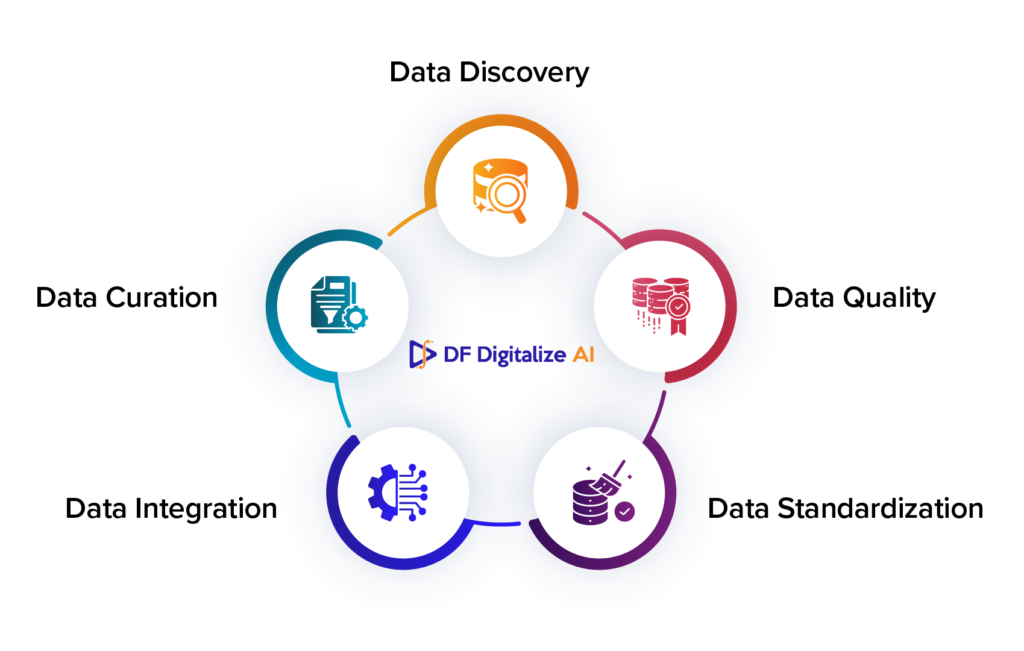
Navigating the Tsunami of Data
According to a recent report by Arcadia Approximately 30% of the world’s data volume is generated by the healthcare industry, with the compound annual growth rate of healthcare data forecasted to reach 36% by 2025.
The Life Sciences (LS) industry is generating and accumulating data at an unprecedented rate. This article highlights some of the Drivers, Impacts and Possible Solutions to meet this challenge and leverage maximum value from this immense opportunity.
Drivers of the Data Boom
The key drivers fuelling the explosive growth of Life sciences and Health Care data can be summarized as below:
- ➣ Increasing digitization of medical records and clinical data, the development of new technologies for data collection and analysis and the growing use of artificial intelligence and machine learning to analyse large datasets. This is leading to a further explosion in the volume and complexity of data.
- ➣ The proliferation of connected devices, forming the Internet of Things (IoT), has ushered in an era of ubiquitous connectivity, enabling an unprecedented amount of data to be generated from sensors, wearables, and other devices embedded in our everyday lives.
- ➣ Businesses are increasingly digitizing their operations, capturing and storing data related to transactions, customer interactions, and supply chains. This digitization is driving a surge in the volume of data being generated.
Impacts of the Data Boom
The exponential growth of LS data is having a profound impact on organizations and society. Some of the key effects include
The data revolution in life sciences is the most transformative force since the discovery of the double helix. It is enabling us to understand disease in new ways, develop more effective treatments, and personalize medicine for individual patients.” – George Church, Professor of Genetics at Harvard University and Founding Director of the Personal Genome Project
- ➣ The volume, variety and complexity of data are making it increasingly difficult to manage and analyse. This is leading to a skills shortage in data literacy and analytics.
- ➣ The collection and use of personal data raise significant ethical concerns, such as privacy and discrimination.
- ➣ AI algorithms trained on biased data can reinforce and amplify existing biases, leading to potentially wrong decisions in the treatment of patients.
- ➣ The sheer volume of data is straining existing IT infrastructure and requiring new approaches to storage, processing, and analysis.
Possible Solutions
Addressing the challenges posed by the exponential growth of LS data requires a multi-pronged approach that includes
- ➣ Clear data governance frameworks are essential to ensure that data is collected, used, and shared responsibly.
- ➣ AI-driven technology can be used to provide deep insights, identify and address bias in data and algorithms.
- ➣ Organizations need to invest in new IT infrastructure that can handle the growing volume and complexity of data.
- ➣ Organizations need to invest in training their employees to understand and work with data effectively.
How Datafoundry Can Help?
Datafoundry has built a strong global team of domain experts, data scientists and ML engineers to help customers assess their business and data needs. Our proprietary AI/ML models and innovative digitization pipeline will significantly reduce the cost and time to business value for your projects. We offer a range of services, including
- ➣ Data strategy consulting
We help organizations develop and implement data strategies that align with their business goals.
- ➣ Data engineering
We design, build, and manage data pipelines to ensure that data is collected, processed, and stored effectively.
- ➣ Data analytics
We analyse data to identify insights that can inform decision-making.
- ➣ AI development
We develop AI solutions that can automate tasks, improve decision-making, and uncover new opportunities.
Our DF Digitalize Solution
Our DF Digitalize solution is a comprehensive approach to data digitization that helps organizations capture, transform, curate and integrate data from disparate sources, it includes
- ➣ Data discovery
We identify and map all data sources within an organization.
- ➣ Data quality
We assess the quality of data and implement data cleansing and validation processes.
- ➣ Data standardization
We standardize data formats and structures to ensure consistency.
- ➣ Data integration
We integrate data from disparate sources into a unified data warehouse or data lake.
- ➣ Data Curation
We curate and transform data into valuable insights for informed decision making.
Conclusion
The exponential growth of LS data is a major challenge, but it also presents a significant opportunity. Organizations that can effectively harness the power of data will be well-positioned for success in the continuously expanding digital age. Datafoundry can help you navigate this data-driven world, providing the data consulting and DF Digitalize solution you need to make informed decisions, massively reduce costs and drive high value innovation.



